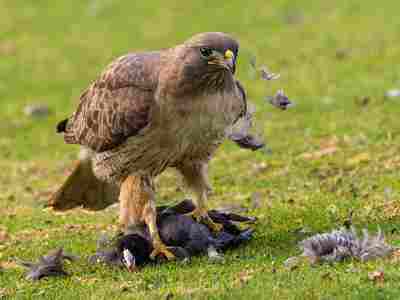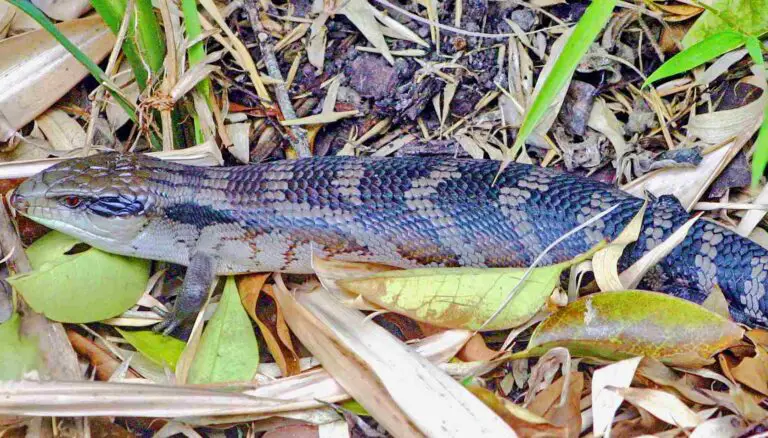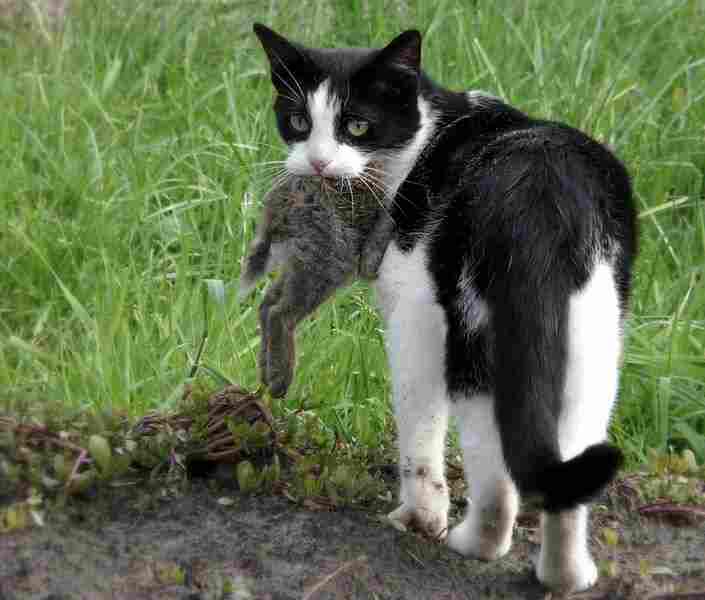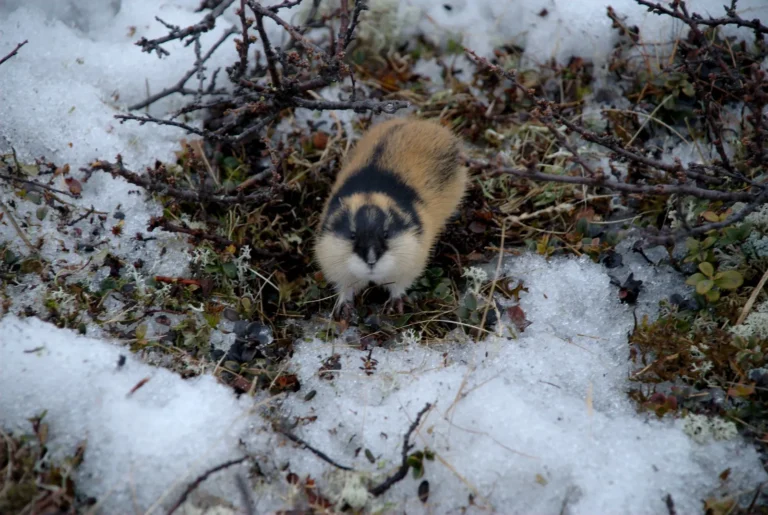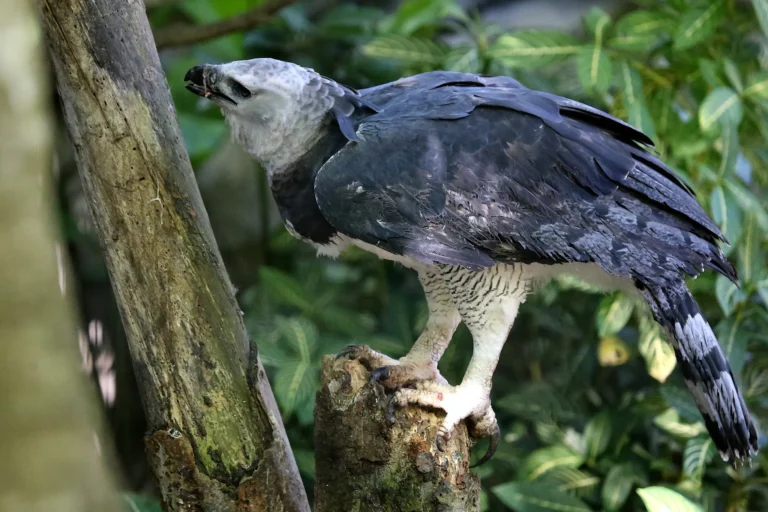What Eats Parrots? 11+ Predators of Parrots Discussed
Animals that eat parrots include; harpy eagle, Philippine eagle, crested eagle, hawk, owl, ornate hawk eagle, savanna hawk, green anaconda, emerald true boa, boa constrictor, ocelot, and puma.
Generally, any predatory animal that can capture a parrot will feed on it. Predation on parrots is not a common occurrence in any geographic region or ecosystem, and most predators of parrots are birds, reptiles and mammals.
Humans are able to hunt and prey on parrots as well, but this is neither common nor acceptable practice in most cases due to the cultural symbolism and ecological importance of the birds
What are Parrots’ Predators?
1). Harpy Eagle
The Harpy Eagle is one of the most prominent predators in the rainforest and is known for its ability to prey on a variety of animals, including parrots. With its large size, powerful talons, and sharp beak, the Harpy Eagle is a formidable hunter.
One of the main reasons why the Harpy Eagle is such a successful predator is its exceptional eyesight. This bird of prey has incredibly sharp vision, allowing it to spot its prey from great distances. This keen eyesight, combined with its powerful flight, makes the Harpy Eagle a formidable hunter in the rainforest.
In addition to parrots, the Harpy Eagle preys on a wide range of animals, including monkeys, sloths, and other birds. Its large size and powerful talons enable it to capture and subdue its prey with ease. Once it has caught its prey, the Harpy Eagle uses its sharp beak to tear into the flesh and consume its meal.
The Harpy Eagle’s hunting techniques are both efficient and effective. It often perches high in the trees, patiently waiting for its prey to come within striking distance. Once it spots its target, the Harpy Eagle swoops down with incredible speed and precision, using its powerful talons to snatch its prey from the branches.
Despite its impressive hunting abilities, the Harpy Eagle is facing threats to its population. Habitat loss and deforestation are major concerns for this magnificent bird of prey. As the rainforest continues to be destroyed, the Harpy Eagle’s habitat is shrinking, making it more difficult for these birds to find suitable prey.
2). Philippine Eagle
The Philippine Eagle is another formidable predator of parrots, specifically the Philippine hanging parrot or Colasisi. With its large size and powerful talons, the Philippine Eagle poses a significant threat to these colorful birds.
One of the key factors that make the Philippine Eagle such an effective predator is its exceptional eyesight. This bird of prey has incredibly sharp vision, allowing it to spot its prey from great distances. This keen eyesight, combined with its powerful flight, makes the Philippine Eagle a formidable hunter in the rainforest.
In addition to parrots, the Philippine Eagle may also prey on other small birds and animals. Its large size and powerful talons enable it to capture and subdue its prey with ease. Once it has caught its prey, the Philippine Eagle uses its sharp beak to tear into the flesh and consume its meal.
The Philippine Eagle’s hunting techniques are both efficient and effective. It often perches high in the trees, patiently waiting for its prey to come within striking distance. Once it spots its target, the Philippine Eagle swoops down with incredible speed and precision, using its powerful talons to snatch its prey from the branches.
3). Crested Eagle
The Crested Eagle is a formidable predator that preys on macaws and other parrots in lowland subtropical and tropical rainforests. With its large size and powerful talons, the Crested Eagle poses a significant threat to these colorful birds.
One of the key factors that make the Crested Eagle such an effective predator is its exceptional hunting skills. This bird of prey has a keen sense of sight and hearing, allowing it to locate its prey with precision. It patiently waits on high perches, scanning the forest for any signs of movement.
Once the Crested Eagle spots its target, it swoops down with incredible speed and agility, using its powerful talons to snatch its prey from the branches. Its sharp beak then tears into the flesh, allowing it to consume its meal.
In addition to parrots, the Crested Eagle may also prey on other small birds and animals found in the rainforest. Its ability to blend into the dense foliage makes it a stealthy hunter, often catching its prey by surprise.
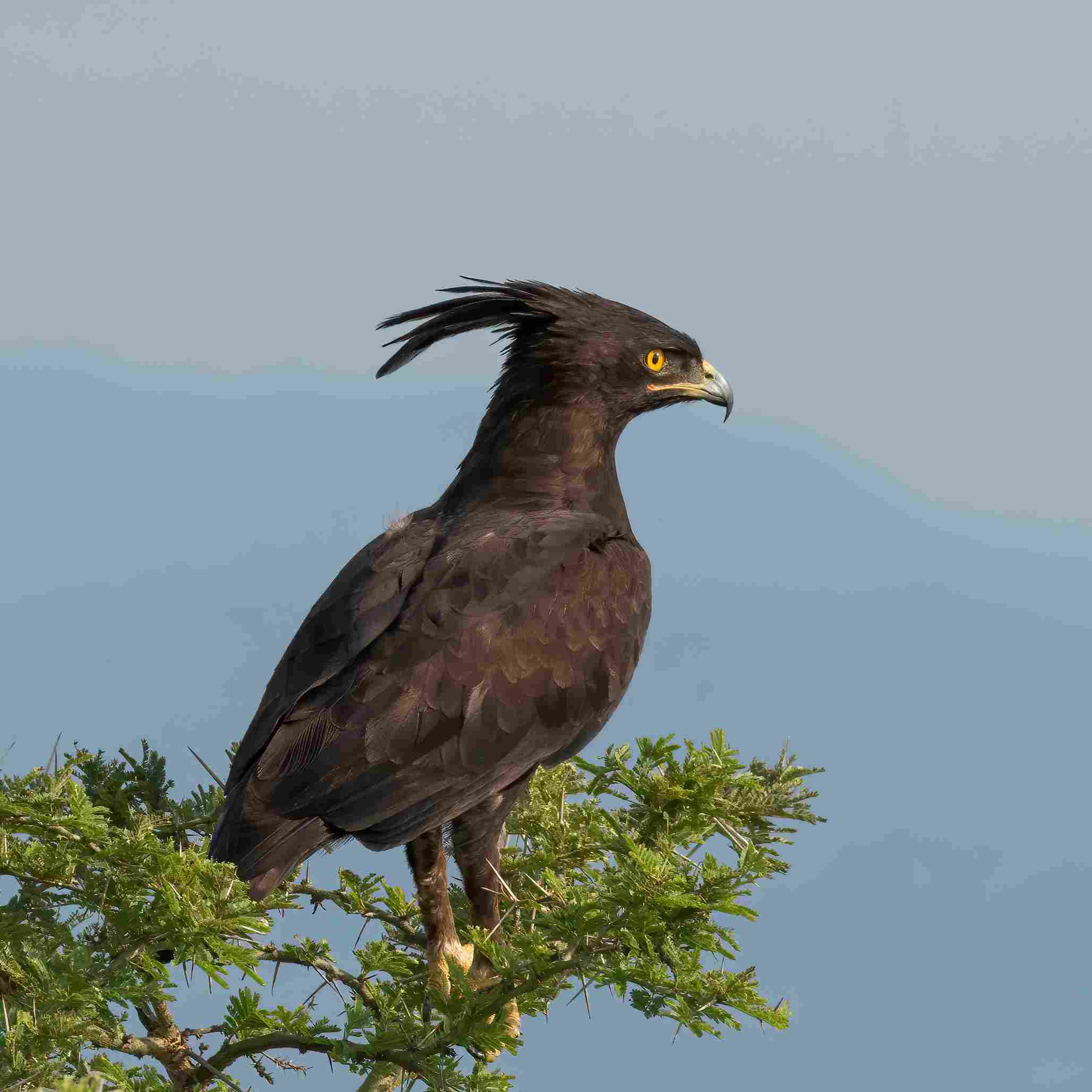
4). Hawk
Hawks are among the predators that pose a threat to parrots. These birds of prey are known for their sharp vision and agility, making them formidable hunters. With their keen eyesight, hawks can spot parrots from great distances, allowing them to swoop down swiftly and catch their prey by surprise.
Hawks have powerful talons that enable them to grasp and hold onto their victims tightly. Once they have captured a parrot, hawks use their sharp beaks to tear into the flesh and consume their meal. They are opportunistic hunters and will take advantage of any chance to feed on parrots or other small birds.
In addition to parrots, hawks may also prey on rodents, reptiles, and other small animals. Their ability to adapt to various habitats makes them versatile predators. Whether in forests, grasslands, or even urban areas, hawks are skilled hunters that can thrive in different environments.
5). Owl
Owls are another potential predator of parrots. These nocturnal birds of prey have exceptional hearing and silent flight, allowing them to sneak up on their prey undetected. With their sharp talons and powerful beaks, owls can easily capture and kill parrots.
Owls are known for their ability to adapt to various habitats, including forests, grasslands, and even urban areas. They have a diverse diet and will prey on a variety of animals, including small birds like parrots.
Their hunting strategy involves perching on a branch or tree stump and patiently waiting for their prey to pass by. Once they spot a parrot, owls will swoop down silently and swiftly, using their talons to grab their victim. They then use their beaks to deliver a fatal blow to the parrot before consuming it.
6). Ornate Hawk Eagle
The Ornate Hawk Eagle is a significantly large hawk that can be found in rainforests. With its impressive size and powerful talons, it poses a threat to parrots and other birds in the area. This predatory bird is known for its hunting prowess and ability to capture prey in mid-flight.
The Ornate Hawk Eagle primarily feeds on small to medium-sized birds, mammals, and reptiles. While parrots are not their main target, they are still considered one of the predators of parrots in the rainforest. With their sharp talons and strong beaks, Ornate Hawk Eagles can easily snatch a parrot from the trees or catch them while they are in flight.
These majestic birds have a keen sense of sight, allowing them to spot their prey from great distances. Once they have located a parrot, they will swoop down with incredible speed and precision, using their talons to grasp their victim firmly. With a swift and fatal blow from their beaks, the Ornate Hawk Eagle secures its meal.
The Ornate Hawk Eagle’s hunting technique and adaptability make it a formidable predator in the rainforest. Its ability to navigate through dense foliage and its agility in flight give it an advantage when hunting for parrots and other prey. While parrots have their own defense mechanisms, such as flocking together and using their colorful plumage as camouflage, they are not always successful in evading the Ornate Hawk Eagle’s sharp eyes and powerful attacks.
7). Savanna Hawk
The Savanna Hawk is a predatory bird that primarily inhabits grasslands and swamps in Central and South America. While it is not commonly associated with rainforests, it is still considered one of the predators of parrots in these regions. With its ability to travel long distances in search of food, the Savanna Hawk can pose a threat to parrots that venture into its territory.
This hawk is known for its keen eyesight and agility in flight, which allows it to spot and pursue its prey with precision. While its main diet consists of small mammals, reptiles, and insects, the Savanna Hawk may also prey on parrots that cross its path. With its sharp talons and powerful beak, it can easily capture and subdue its victims.
The Savanna Hawk’s hunting technique involves soaring high above the grasslands, scanning the area for any signs of movement. Once it spots a potential prey, it will swiftly dive down, using its talons to snatch the unsuspecting parrot from the ground or from the trees. Its strong beak then delivers a fatal blow, ensuring a successful hunt.
Despite its preference for grasslands, the Savanna Hawk’s ability to travel far in search of food makes it a potential threat to parrots in various habitats, including rainforests. Parrots, with their flocking behavior, have developed defense mechanisms to evade predators. However, they are not always successful in avoiding the sharp eyes and swift attacks of the Savanna Hawk.
8). Green Anaconda
The Green Anaconda is another predator that poses a threat to parrots. This massive snake, known for its incredible size and strength, is capable of overpowering and consuming a variety of prey, including parrots. With its ability to swim and slither through the dense vegetation of the rainforest, the Green Anaconda can easily ambush unsuspecting parrots.
As one of the largest snakes in the world, the Green Anaconda can reach lengths of up to 30 feet and weigh over 500 pounds. Its sheer size alone makes it a formidable predator. With its muscular body and powerful jaws, the Green Anaconda can constrict its prey, squeezing the life out of it before swallowing it whole.
Parrots, with their vibrant colors and loud calls, can attract the attention of the Green Anaconda. These snakes have a keen sense of smell and can detect the presence of prey from a distance. Once they locate a parrot, they will stealthily approach, using their camouflage to blend in with the surrounding vegetation.
When the time is right, the Green Anaconda will strike, coiling its body around the parrot and squeezing tightly. The parrot’s struggles are futile against the immense strength of the snake. Within minutes, the Green Anaconda will have subdued its prey and begun the process of swallowing it whole.
9). Emerald Tree Boa
Emerald Tree Boas are fascinating predators that pose a threat to parrots in their natural habitat. These beautiful snakes, known for their vibrant green coloration, are highly skilled climbers and ambush predators. With their slender bodies and prehensile tails, Emerald Tree Boas can navigate the dense rainforest canopy with ease, making them formidable hunters.
These boas primarily feed on small mammals and birds, including parrots. They have a unique hunting strategy, relying on their excellent camouflage to blend in with the surrounding foliage. Perched on tree branches, they patiently wait for unsuspecting prey to come within striking distance.
When a parrot ventures too close, the Emerald Tree Boa strikes with lightning speed, using its sharp teeth to latch onto its prey. Its powerful constriction then comes into play, as the boa wraps its body around the parrot, squeezing tightly to immobilize it. The parrot’s struggles are futile against the boa’s strength.
Once the parrot is subdued, the Emerald Tree Boa begins the process of swallowing its prey whole. Its flexible jaws and expandable body allow it to consume prey much larger than its own head. This efficient feeding method ensures that the boa gets the necessary nutrients from its meal.
10). Boa Constrictor
Boa Constrictors are formidable predators that pose a threat to parrots in their natural habitat. These large, non-venomous snakes are known for their powerful constriction abilities, which they use to subdue and consume their prey. While their diet primarily consists of small mammals, Boa Constrictors have been known to prey on parrots as well.
With their muscular bodies and sharp teeth, Boa Constrictors are well-equipped to capture and overpower their avian prey. They rely on stealth and patience, often lying in wait for unsuspecting parrots to come within striking distance. Once the opportunity arises, the boa strikes with lightning speed, coiling its body around the parrot and squeezing tightly to immobilize it.
The parrot’s struggles are futile against the boa’s strength, as the constrictor continues to tighten its grip. Eventually, the parrot succumbs to the boa’s constriction, becoming motionless and helpless. The Boa Constrictor then begins the process of swallowing its prey whole, using its flexible jaws and expandable body to consume the parrot.
11). Ocelot
The ocelot, a small feline predator, is another threat to parrots in their natural habitat. With their exceptional climbing and hunting skills, ocelots can easily prey on parrots, including macaws. These agile hunters are known for their stealth and agility, making them formidable predators in the rainforest.
Ocelots have adapted to their environment, allowing them to navigate through the dense vegetation with ease. Their keen senses and sharp claws enable them to climb trees effortlessly, giving them an advantage when hunting for prey. Parrots, with their vibrant colors and loud calls, can attract the attention of ocelots, making them a potential target.
Using their stealthy approach, ocelots patiently stalk their prey, waiting for the perfect moment to strike. With a swift pounce, they can capture parrots mid-flight or while perched on branches. Their sharp teeth and powerful jaws allow them to quickly dispatch their prey.
The ocelot’s diet is not limited to parrots alone. They are opportunistic hunters and may also prey on small mammals, birds, reptiles, and even fish. Their adaptability and versatility make them successful predators in the rainforest ecosystem.
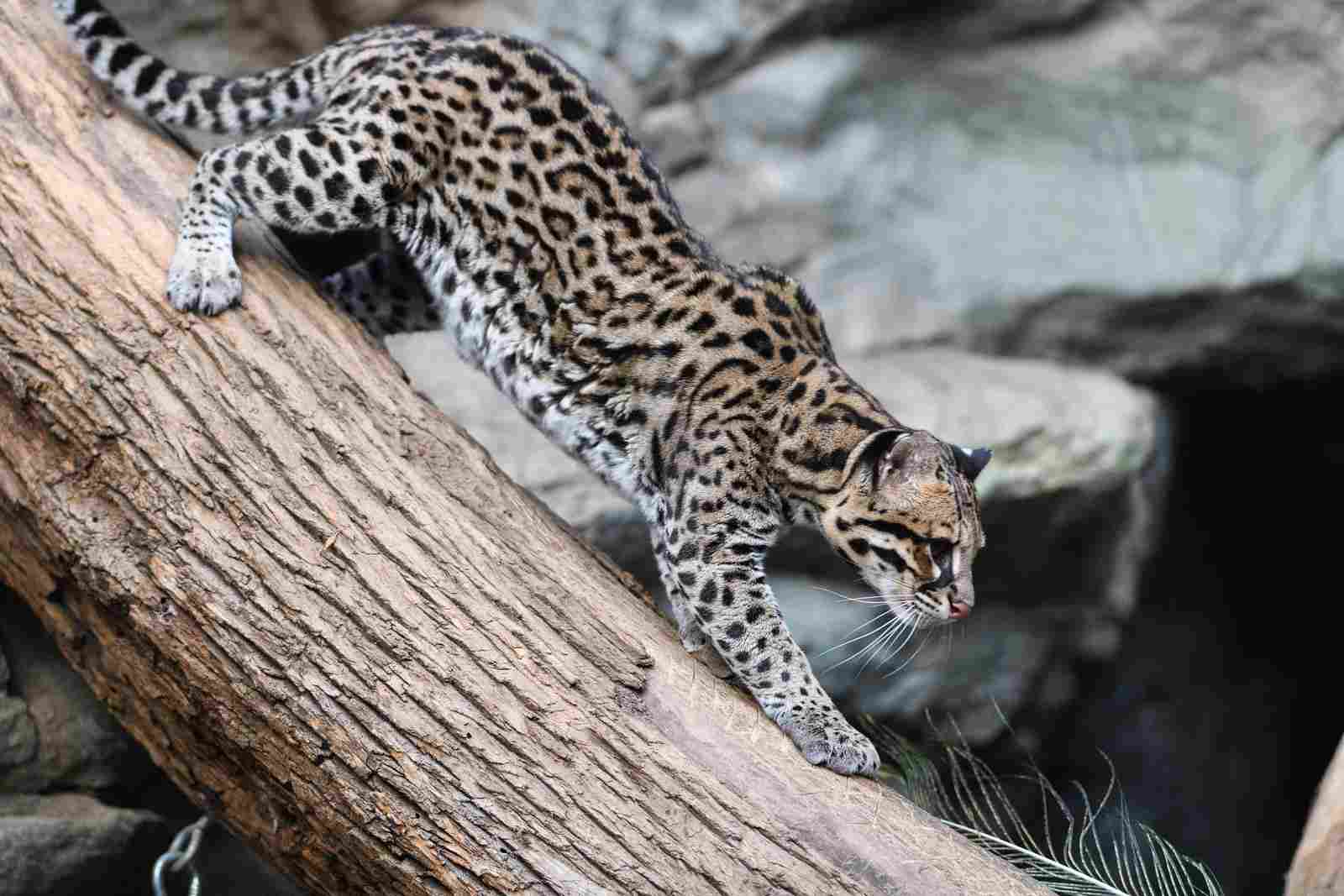
12). Puma
The puma, another agile climbing feline, is one of the parrot’s predators in the rainforest. While the jaguar is larger, the puma is more likely to prey on parrots because it excels at climbing trees. With its muscular build and retractable claws, the puma can effortlessly navigate through the dense vegetation, making it a formidable threat to parrots.
Pumas are known for their stealth and patience when hunting. They rely on their keen senses to track down their prey, including parrots. With a combination of speed and agility, they can swiftly pounce on parrots mid-flight or while perched on branches. Their powerful jaws and sharp teeth allow them to quickly dispatch their prey.
While parrots are a potential part of the puma’s diet, they are not the only target. Pumas are versatile hunters and may also prey on small mammals, birds, and reptiles.
What Eats Parrots in the Rainforest?
In the rainforest, parrots face a variety of predators that include birds like the crested eagle and harpy eagle, reptiles such as the emerald tree boa and green anaconda, and mammals like the ocelot and puma. These predators pose a significant threat to the parrot population, as they have adapted to their rainforest environment and developed specialized hunting techniques.
Birds of prey, such as the crested eagle and harpy eagle, are formidable predators of parrots in the rainforest. With their sharp talons and powerful beaks, these eagles are well-equipped to capture and kill parrots in mid-flight or while perched on branches. Their keen eyesight allows them to spot parrots from a distance, making them efficient hunters in the dense rainforest canopy.
Reptiles also play a role in preying on parrots in the rainforest. The emerald tree boa and green anaconda are both skilled hunters that can ambush parrots from the trees or water. The emerald tree boa, with its vibrant green coloration, blends seamlessly with the foliage, making it difficult for parrots to detect. The green anaconda, on the other hand, is a stealthy predator that can silently approach parrots near bodies of water, using its powerful coils to constrict and suffocate its prey.
Among the mammals that prey on parrots in the rainforest, the ocelot and puma are notable predators. The ocelot, a small wild cat, is an agile climber that can easily navigate the trees in search of parrots. With its sharp claws and stealthy approach, the ocelot can surprise parrots and swiftly capture them. The puma, another agile climbing feline, is also a threat to parrots in the rainforest. With its muscular build and retractable claws, the puma can effortlessly navigate through the dense vegetation, making it a formidable predator.
Conclusion
*In conclusion, this article has explored the various predators that pose a threat to parrots in different environments, including the rainforest. Each section has provided insights into the hunting techniques and characteristics of these predators, highlighting their ability to capture and prey on parrots.
*The first section discussed the harpy eagle, a formidable bird of prey known for its sharp talons and powerful beak. With its keen eyesight and agility, the harpy eagle is a skilled hunter that can capture parrots in mid-flight or while perched on branches.
*The second section focused on the Philippine eagle, another bird of prey that poses a significant threat to parrots. With its large size and strong beak, the Philippine eagle can easily capture and kill parrots in the rainforest.
*The third section explored the crested eagle, which shares similar hunting techniques with the harpy eagle. With its impressive wingspan and sharp talons, the crested eagle is a formidable predator that can swiftly capture parrots.
*Moving on to the fourth section, we discussed hawks as predators of parrots. These birds of prey have sharp beaks and talons, allowing them to capture and kill parrots in the rainforest.
*The fifth section focused on owls, which are known for their silent flight and excellent night vision. Owls can surprise parrots and capture them with their sharp talons.
*The sixth section explored the ornate hawk eagle, a bird of prey that is well-adapted to the rainforest environment. With its powerful beak and sharp talons, the ornate hawk eagle can effectively hunt and capture parrots.
*The seventh section discussed the savanna hawk, which preys on parrots in open areas of the rainforest. With its keen eyesight and agility, the savanna hawk can spot and capture parrots.
*Moving on to reptiles, the eighth section focused on the green anaconda. This large snake can ambush parrots near bodies of water, using its powerful coils to constrict and suffocate its prey.
*The ninth section explored the emerald tree boa, a snake that blends seamlessly with the foliage of the rainforest. With its vibrant green coloration, the emerald tree boa can surprise parrots and capture them.
*The tenth section discussed the boa constrictor, another snake that preys on parrots. With its ability to constrict and suffocate its prey, the boa constrictor can capture and kill parrots in the rainforest.
*Lastly, the eleventh section focused on mammals that prey on parrots. The ocelot, a small wild cat, is an agile climber that can navigate the trees in search of parrots. With its sharp claws and stealthy approach, the ocelot can capture parrots swiftly.
*The twelfth section explored the puma, another agile climbing feline that poses a threat to parrots. With its muscular build and retractable claws, the puma can navigate through the dense vegetation of the rainforest and capture parrots.
*Parrots face a wide range of predators in their natural habitats, including birds of prey, reptiles, and mammals. These predators have adapted to their environments and developed specialized hunting techniques to capture and prey on parrots. Understanding the threats that parrots face is crucial for their conservation and protection in the wild.
FAQS
1. What Animals Eat Parrots?
Parrots have several predators in their natural habitats. These predators include eagles, hawks, snakes, ocelots, and pumas. These animals have adapted to hunt and feed on parrots as part of their natural diet.
Birds of prey, such as eagles and hawks, are known to target parrots due to their ability to fly and their vibrant colors, which make them easy to spot. These predators have sharp talons and beaks that allow them to catch and kill parrots in mid-air or on the ground.
Snakes are another common predator of parrots. They use their stealth and agility to ambush parrots while they are perched or nesting. Snakes can constrict their prey, suffocating them before swallowing them whole.
In addition to birds and snakes, larger feline predators like ocelots and pumas also pose a threat to parrots. These agile hunters can climb trees and pounce on parrots from above, using their sharp claws and teeth to capture and consume them.
2. What Eats Macaws in the Rainforest?
Macaws, with their vibrant plumage and large size, are preyed upon by a variety of predators in the rainforest. One of the main predators of macaws is the harpy eagle. These majestic birds of prey have powerful talons and can swoop down from the sky to capture macaws in mid-flight. Harpy eagles are known for their strength and agility, making them formidable hunters.
Another threat to macaws in the rainforest is large constrictor snakes. These snakes, such as the boa constrictor and anaconda, can ambush macaws while they are perched or nesting. With their ability to constrict their prey, these snakes can overpower and suffocate macaws before swallowing them whole.
Agile felines, such as jaguars and ocelots, are also predators of macaws. These stealthy hunters can climb trees and pounce on macaws from above, using their sharp claws and teeth to capture and consume them.
3. What is The Predator of a Parrot?
The predator of a parrot is any animal that captures and feeds on a parrot.
One of the main predators of parrots is the raptor family, which includes birds of prey such as hawks, falcons, and owls. These aerial hunters have sharp talons and beaks that allow them to capture and kill parrots in flight or while perched on trees.
Another predator of parrots is the mammalian family, including carnivores like foxes, wild cats, and monkeys. These agile predators can climb trees and ambush parrots, using their speed and agility to catch them off guard. They have sharp teeth and claws that enable them to overpower and consume parrots.
In addition to birds and mammals, reptiles like snakes also pose a threat to parrots. Large constrictor snakes, such as pythons and boas, can coil around parrots and squeeze them until they suffocate. These snakes are stealthy hunters and can strike quickly, making it difficult for parrots to escape.
4. Can a Parrot Eat Meat?
Yes, a parrot can eat meat.
Parrots are omnivores, which means they have the ability to eat both plants and meat.
However, it is important to note that parrots should not be fed meat regularly. While they may consume small amounts of insects or other animal protein in the wild, their diet primarily consists of fruits, seeds, nuts, and vegetation. Feeding parrots a balanced diet that includes a variety of fruits, vegetables, and specially formulated pellets is essential for their overall health and well-being. It is always best to consult with a veterinarian or avian specialist to ensure that your parrot’s dietary needs are being met.
5. Do Parrots Eat All Day?
Parrots do not eat all day in the wild. They typically feed during the early morning and late afternoon hours of the day. However, if food is plentiful, they may feed for up to 10 hours. In captivity, their eating habits depend on food availability and their training behavior. Generally, parrots eat and then rest for several hours in intervals.
It is important to note that parrots should have a balanced diet that includes a variety of fruits, vegetables, and specially formulated pellets. This ensures their nutritional needs are met and promotes their overall health and well-being. Providing regular meal times and monitoring their food intake is essential to prevent overeating or undernourishment.
6. Do Snakes Eat Parrots?
Yes, snakes do eat parrots, especially large ones like pythons. Snakes are carnivorous predators that have the ability to consume prey much larger than their own size. Parrots, with their vibrant colors and loud calls, can attract the attention of snakes in their natural habitats. Snakes use their powerful jaws to capture and swallow their prey whole.
While it may seem surprising that a snake could consume a parrot, their flexible bodies and unhinged jaws allow them to stretch and accommodate larger meals.
7. Are Parrots Endangered?
As of 2023-2024, nearly 50 percent of all living parrot species (about 116 out of 374) are critically endangered. This alarming statistic highlights the urgent need for conservation efforts to protect these beautiful birds. The main factors contributing to their endangered status include disease, habitat fragmentation, greenhouse gas emissions, and rapid climate change.
Disease outbreaks, such as avian malaria and psittacine beak and feather disease, have devastated parrot populations in certain regions. Habitat fragmentation, caused by deforestation and human encroachment, disrupts their natural habitats and limits their access to food and nesting sites. Additionally, the increasing levels of greenhouse gas emissions and rapid climate change pose significant threats to parrots and their ecosystems.
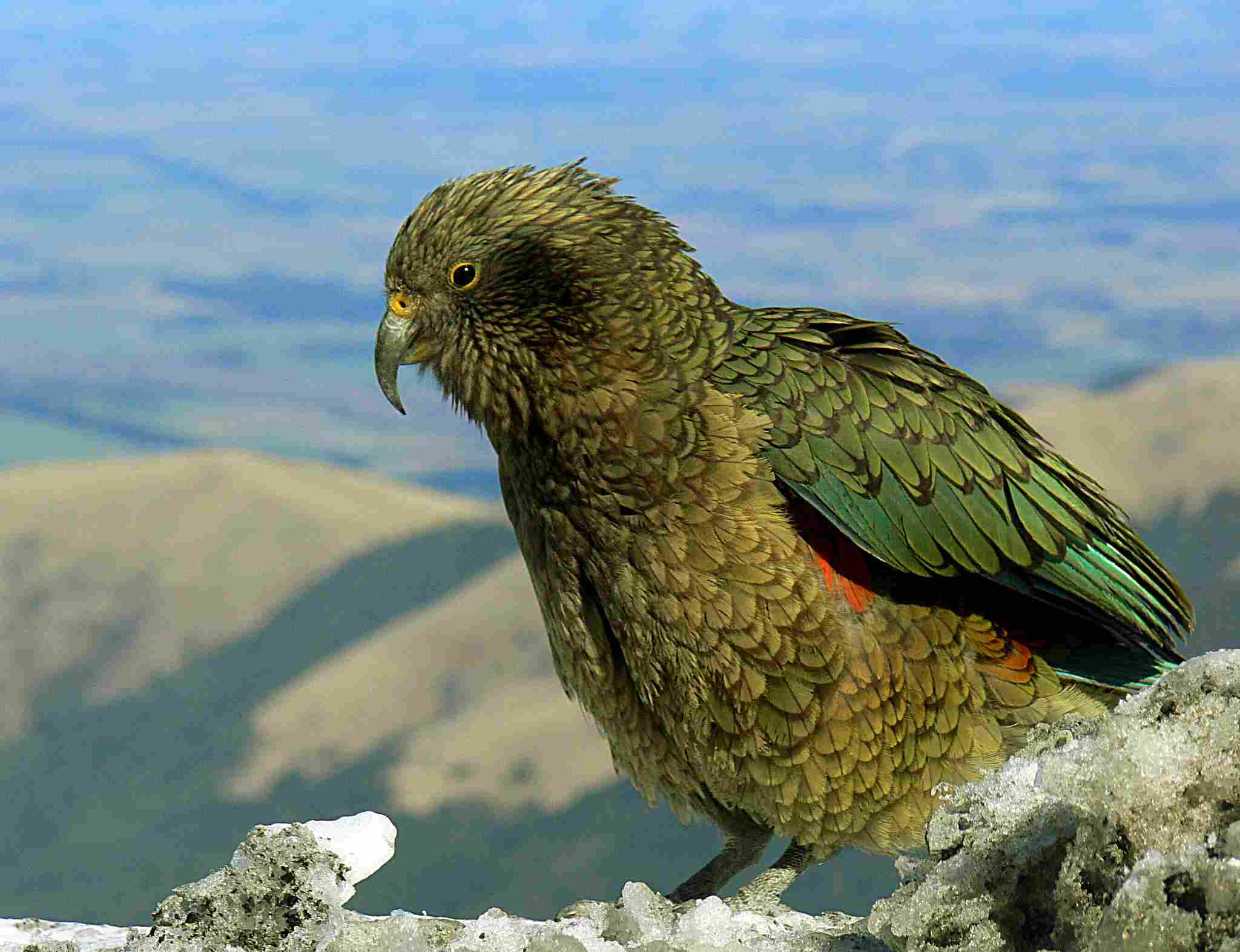
8. How do Parrots Protect Themselves from Predators?
Parrots have developed various strategies to protect themselves from predators in their natural habitats. One of their most effective defenses is their colorful plumage, which acts as camouflage in the equally vibrant rainforest. By blending in with their surroundings, parrots can avoid detection by potential predators.
In addition to camouflage, parrots have evolved the ability to fly erratically. This erratic flight pattern makes it difficult for predators to track and catch them, increasing their chances of escape. Furthermore, parrots are known for their loud vocalizations, which can serve as a deterrent to some predators. The loud noises can startle or scare off potential threats, giving the parrots a chance to flee to safety.
When faced with a direct confrontation, parrots have a few physical defenses at their disposal. They can raise their feathers to appear larger and more intimidating, making themselves less appealing to predators. In rare cases, parrots may even resort to using their curved beaks as weapons, but only as a last resort when all other options have been exhausted.
9. Where Do Parrots Live?
Parrots can be found in a variety of habitats, including tropical rainforests, grasslands, tropical wetlands, and even some temperate rainforests. These colorful birds are highly adaptable and can thrive in diverse environments around the world.
In tropical rainforests, parrots are often seen perched on tree branches, blending in with the lush foliage. They make their homes in tree hollows, using their strong beaks to excavate nesting cavities. In grasslands, parrots can be found foraging for seeds and fruits on the ground or in low shrubs. They are also known to inhabit tropical wetlands, where they feed on aquatic plants and insects.
Parrots are well-suited to their habitats, utilizing their vibrant plumage for camouflage and their strong flight abilities to navigate through dense vegetation. Their ability to adapt to different environments has allowed them to establish populations in various regions across the globe.
